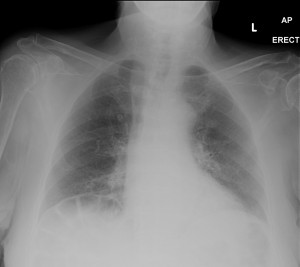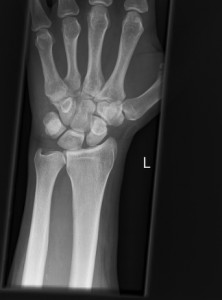With thanks to Ignatius.
Your next patient is a 78 yo lady who presents with agitation. She is a nursing home resident and has a history of dementia.
Chilaiditi’s syndrome vs Chilaiditi’s sign
Chilaiditi’s syndrome = rare condition when the transposition of a loop of transverse colon between the diaphragm and the liver causes symptoms (abdominal pain or shortness of breath)
Most commonly it is an incidental finding in asymptomatic patients , as a normal anatomical variant = Chilaiditi’s sign


